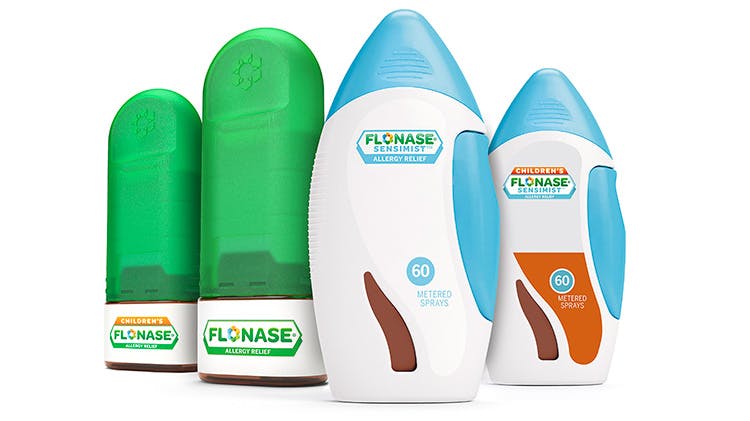Allergic Rhinits Overview

At GSK we are committed to helping your patients with respiratory allergies feel better and to reducing their symptom burden and adverse consequences. With advanced treatments and ongoing research, we are creating new opportunities for your patients to do more, feel better, and live longer.
What is an allergy?
What is an allergy?
Allergy—An excessive or abnormal adaptive immune response directed against non-infectious, often inert environmental substances (allergens), including non-infectious components of certain infectious organisms.1
Allergic disorders, which include anaphylaxis, allergic rhinitis/hay fever, eczema, and asthma, afflict approximately 25% of people in the developed world. For people with allergies, persistent or repetitive exposure to allergens, which are typically innocuous substances, results in chronic allergic inflammation.1
In turn, this can produce long-term changes in the structure of the affected organs and substantial abnormalities in their function.1
Allergens and allergic inflammation
Allergen—There are two main types of allergen:
- Any non-infectious environmental substance that can induce immunoglobulin E (IgE) production (thereby ‘sensitizing’ the subject) so that later re-exposure induces an allergic reaction.1
Common allergen sources include1:
1. Grass and tree pollens
2. Animal dander (from skin and fur)
3. House dust mite faecal particles
4. Certain foods (eg, peanuts, tree nuts, fish, shellfish, milk, and eggs)
5. Latex
6. Various medicines
7. Insect venoms
- A non-infectious environmental substance that can induce an adaptive immune response linked to local inflammation—but one thought to occur independently of IgE (eg, allergic contact dermatitis to poison ivy or nickel).1
Allergic inflammation—The inflammation produced in sensitized subjects after exposure to a specific allergen(s). With persistent or repetitive exposure to allergens, chronic allergic inflammation develops, with associated tissue alterations.1
What is allergic rhinitis?
Allergic rhinitis (AR) is defined as an IgE antibody-mediated, inflammatory disease characterized by one or more of the following symptoms2:
- Nasal congestion
- Rhinorrhea—runny nose (anterior and posterior)
- Sneezing and itching
There are several AR classification characteristics that can be helpful to determine appropriate patient treatment strategies, including2:
- Temporal pattern and context of exposure to a triggering allergen:
a. Seasonal (eg, pollens) or perennial (year-round exposures such as house dust mites), or
b. Episodic environmental (from allergen exposures not normally encountered in the patient’s home or occupational environment, eg, visiting a home with pets not present in an individual’s home) - Frequency and duration of symptoms
- Severity of symptoms
AR has traditionally been categorized as seasonal AR (SAR) or perennial AR (PAR), both of which are conditions recognized as having similar pathophysiologic and end-organ manifestations. In general, the differences between the two conditions are primarily based on the causes and duration of disease.2
Read more about allergic rhinitis



Impact on Patient Quality of Life
Find out about the impact allergic rhinitis has on patients’ daily lives



The FLONASE family
Find out how our products can help your patients suffering from allergic rhinitis